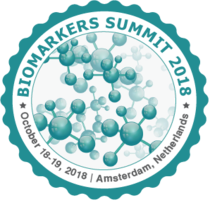
David G Ostrow
International Cannabis Cancer Treatment Institute, USA
Title: It takes an Orchestra to Produce the Entourage of Biomarkers Involved in Cannabinoid Treatment of HIV
Biography
Biography: David G Ostrow
Abstract
While T4 lymphocytes are considered the ultimate target of HIV infection and their depletion by transformation into factories for the replication of HIV virions leading to immune deficiency (AIDS), there are actually complexes, orchestra of cells beginning with macrophages and including B lymphocytes that are essential for the establishment of HIV infection. The cannabinoid CB2 receptors present on the surface of macrophages play an essential role in limiting the establishment of primary HIV infection of the immune system. Activation of CB2r reduces interferon-gamma production of interleukins 2,10,12, and 23 and interferon-gamma itself by way of activating the ERK 1/2 and JNK pathway in CD4+ and CD8+ T cells. This also shifts immunity from TH1 to TH2. CB2r is highly expressed in B cells and it negatively regulates differentiation and proliferation through the same pathways, limiting the expression of other lymphocyte cell surface markers. Theoretically, such actions should accelerate progression of immunosuppression in HIV+ patients. Paradoxically, CB2 agonist has been shown in vitro and in animal models to reduce the expression of the G-protein coupled chemokine receptors CD4, CXCR4 and CCR5, all of which play complementary roles in HIV binding and entry into T4 lymphocytes, directly suppressing replication of HIV. In HIV infected monocytes and macrophages, a pro-survival gene expression shift has been found that upregulates the p53/ras MAPK pathway as well as pro-inflammatory cytokine production, both of which go hand in hand in the regulatory scheme of the cannabinoid system. Thus, activation of the ERK1/2, JNK and cJun/Fos pro-apoptotic pathways via CB2r agonist acts in vitro to counter both the pro-inflammatory and anti-apoptotic effects of HIV infected immune cells as well as shield against further infection. Longitudinal studies of newly infected persons provide support for the protective effects of cannabinoid use in both the spread of HIV by sexual contact and the progression of immunodeficiency. With the widespread end of cannabis prohibition and the development of standardized laboratory measures of both blood levels of active cannabinoids and the immune biomarkers reflecting the entourage of cannabinoid effects on the orchestration of human immunological functioning and regulation, the stage is now set for the development of cannabinoid-based preventive and therapeutic treatments against HIV.

